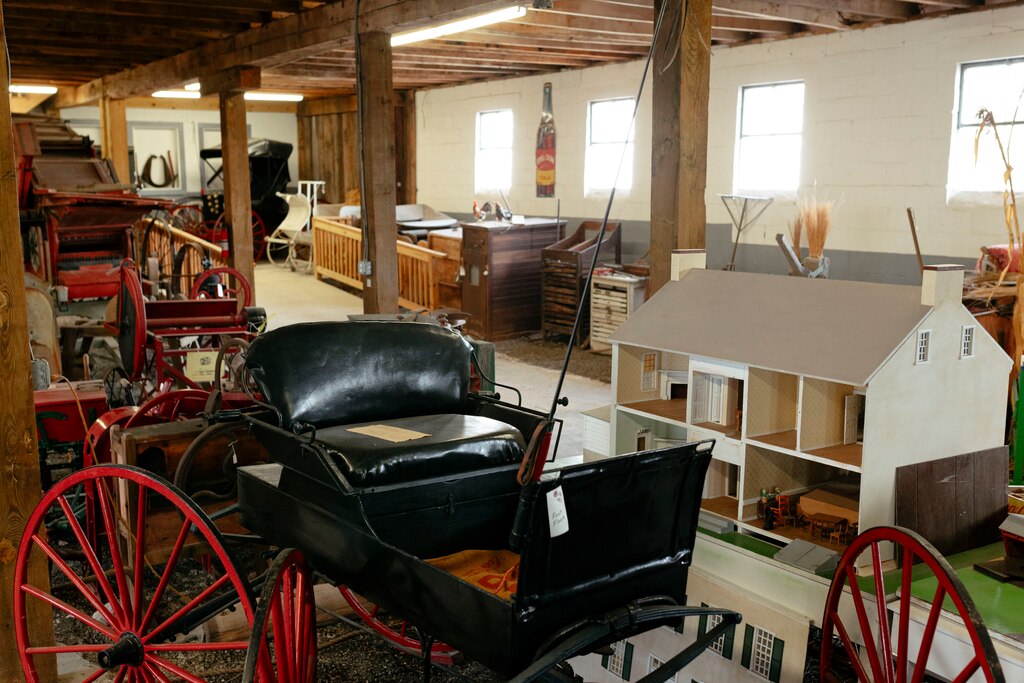For years, families visited the Living Farm Heritage Museum in Western Howard County to check out antique tractors and other items to better understand the county’s rich agricultural history.
After the museum closed, Howard County Executive Calvin Ball established a task force to come up with recommendations for both the museum buildings and the 380-acre park on which they sit.
Earlier this month, the 23-member task force released a report laying out its vision for the park. The recommendations include horse trails, an archery range, campsites and a large agricultural center, all open to the public.
The county plans to locate its new Office of Agriculture at Hebb House, an elegant white house on the property that is undergoing renovations. Ball will seeking county funding next fiscal year to move forward with other plans focused primarily on agriculture, but also outdoor activities.
“This collaborative effort reflects our commitment to enhancing the agricultural landscape of West Friendship Park, fostering community engagement, and promoting agriculture for future generations,” Ball said in a statement.
Here are five things to know about the county’s plans for the park.
Where is West Friendship Park?
If you’ve ever been to the Howard County Fair, you know the park’s location, just across Frederick Road from the fairgrounds. It sits in the north/northwest corridor of the county and fits in nicely with the vast space and farmland in Western Howard County.
What was task force’s mission?
Ball formed the group in March, after announcing last year that the park would house a new Office of Agriculture. He tasked the group — made up of Howard County Farm Bureau members, county fair directors, local farmers and people in the agriculture community — with envisioning possible agricultural programs and uses for the park.
This followed the closure a year ago of the Living Farm Heritage Museum, which was operated by the Howard County Antique Farm Machinery Club, after 18 years of operation. The museum, located on the grounds of the park, housed thousands of agricultural artifacts dating as far back as 400 years.
The county had terminated a lease with the group early due to code violations at the museum complex and the group’s lack of proper event permits, county officials have said.
Antique Farm Machinery Club members and volunteers subsequently cleared out thousands of items from the museum buildings in May, according to John Frank, the club’s president. Items are now being kept in various storage units, at volunteers’ homes and even in other museums.
County Councilman David Yungmann, whose District 5 includes the park, said that the buildings that housed the farm museum will need renovations and investment before the public can use them again.
Is agriculture still a big part of the local economy?
While Howard County is anchored by the planned community of Columbia and is increasingly suburban, it continues to have a thriving agriculture population that includes local farms, the annual county fair and students involved in agricultural programs like 4-H and Future Farmers of America.
There are at least four active local farms near West Friendship Park, and dozens more across the county, according to a searchable map from the Howard County Economic Development Authority.
What is the vision for the park?
The vision for the park can be broken down into three categories: agricultural support, education and recreation.
Agricultural support includes the long-awaited agricultural center, freezers and cold storage for farmers, space for new and beginning farmer programs, and the Roving Radish Mobile Marketplace, which partners with local farmers to sell produce and meat.
“The agricultural community has wanted these things for a long time, and in the last couple of years, the administration, the county executive got serious about delivering on these things for the ag community,” said Yungmann.
Agricultural education includes space for 4-H and Future Farmers of America to raise hogs and small ruminants and room for agricultural workshops and awareness programs. The group also envisions the area as a tourism destination for the public to learn about agriculture, with hands-on activities and opportunities to meet farmers, and a walking tour that would teach visitors about conservation practices across the county’s farms.
“There’s 4-H kids that live in Columbia and they want to have an animal project, but they can’t do it at their townhouse, so they can have their animal project out here,” he said.
Often, the county fair is the only time that students in these programs can hang out, he said. “It would be fun for those kids to kind of have an area where they’re doing their projects and socially, where they can see kids with common interests,” he added.
As for recreation, recommendations include horseback riding trails; archery and shooting areas; campgrounds for organization such as Future Farmers of America, 4-H and Boys Scouts of America; and a new farm museum where visitors would be “immersed in a living history experience,” according to the report.
Yungmann said the Office of Agriculture would coordinate programs for children and students, as well as public events and workshops that would be held in the agricultural center.
How much would it cost?
The total cost of the improvements would be between $23.4 million and $28.4 million, based on the county recreation and parks department’s estimates, Yungmann said.
Safa Hira, the county’s director of communications, said the focus group’s recommendations would require funding from the County Council. Funding requests will be included in the fiscal year 2026 budget, she said.





Comments
Welcome to The Banner's subscriber-only commenting community. Please review our community guidelines.